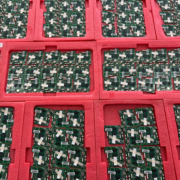PCBA Motherboard: What You Need to Know
In the world of electronics manufacturing, the PCBA motherboard lies at the heart of every smart device—from smartphones and smart home panels to industrial control systems and embedded AI terminals. Yet, many engineers, procurement managers, and product developers lack a clear understanding of what a PCBA motherboard is, how it’s assembled, and what factors influence quality, cost, and performance.
This article breaks down everything you need to know about PCBA motherboards—what they are, how they’re made, and why they are critical to modern electronic products.
What Is a PCBA Motherboard?
PCBA stands for Printed Circuit Board Assembly, and when combined with the motherboard—the central board that connects all key components in a system—it refers to a fully assembled and functional mainboard with all necessary components soldered in place.
A PCBA motherboard typically includes:
- Microprocessor / SoC (e.g., Rockchip RK3566, RK3568)
- Memory (RAM, Flash, eMMC)
- Power management circuits
- Peripheral connectors (USB, HDMI, Ethernet, GPIO, UART)
- Communication modules (Wi-Fi, Bluetooth, 4G/5G)
- Crystal oscillators, capacitors, resistors, and inductors
The PCBA Motherboard Assembly Process
Creating a PCBA motherboard is a multi-stage, precision-driven process:
1. PCB Fabrication
- Multi-layer copper-clad boards are designed and manufactured.
- Layers are etched and laminated based on high-speed signal and power routing requirements.
2. SMT (Surface Mount Technology)
- A stencil printer applies solder paste to pads.
- High-speed machines place components like chips, capacitors, and ICs.
- Reflow ovens melt the paste and form solid solder joints.
3. Inspection
-
AOI (Automated Optical Inspection) and X-ray inspection are used to check for defects, especially under BGA components.
4. Functional Testing
- Boards are powered and tested for performance, interface response, and OS boot.
- For embedded boards like RK3566 or RK3568, software pre-flashing and verification are included.
Applications of PCBA Motherboards
PCBA motherboards power a wide range of industries:
| Industry | Use Case Example |
|---|---|
| Smart Home | Smart control panels, thermostat displays |
| Industrial Automation | PLC systems, HMI terminals, sensor gateways |
| Medical Devices | Portable monitors, diagnostic systems |
| Automotive Electronics | Infotainment, telematics units |
| Consumer Electronics | Tablets, set-top boxes, multimedia systems |
Factors to Consider When Choosing a PCBA Motherboard
1. Processor & Performance
-
Choose the right SoC (e.g., ARM-based RK3566/RK3568) based on your computing, display, and multimedia needs.
2. I/O and Connectivity
-
USB, HDMI, CAN, RS485, PCIe, and Ethernet options should align with your project.
3. Thermal Design
-
Use heat sinks or spreaders for high-performance CPUs to ensure stable operation.
4. OS and Software Support
-
Ensure compatibility with Android, Linux (Debian/Ubuntu), or RTOS depending on your device.
5. Manufacturer Experience
-
Work with experienced OEM/ODM partners like Portworld, which offer full customization, fast prototyping, and reliable mass production.
Portworld’s Advantage in PCBA Motherboard Manufacturing
As a trusted provider of embedded hardware solutions, Portworld specializes in the design, assembly, and customization of PCBA motherboards based on platforms such as RK3566, RK3568, MTK, Snapdragon, and Intel.
Portworld’s Services Include:
- Custom mainboard design (schematic + layout)
- BGA soldering & X-ray testing
- BOM optimization and cost control
- PoE-enabled motherboard solutions
- Industrial-grade testing & certifications
- CKD/SKD shipment models for global clients
Whether you’re developing a smart home panel, an industrial controller, or an IoT edge node, Portworld ensures that your PCBA motherboard is optimized for reliability, performance, and scalability.
Understanding how PCBA motherboards are built and what goes into their quality is essential for anyone involved in electronics design or sourcing. From chip selection and SMT assembly to final testing and system integration, every stage impacts your product’s success.
By choosing the right partner and understanding the process, you can ensure your product is powered by a reliable, cost-efficient, and high-performance PCBA motherboard.



